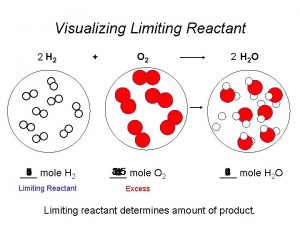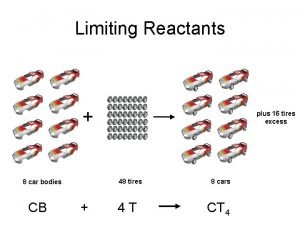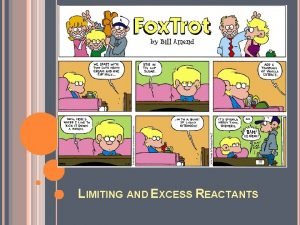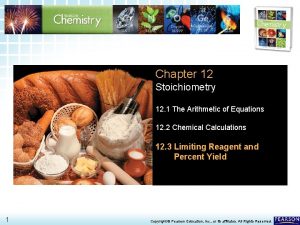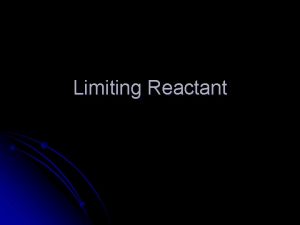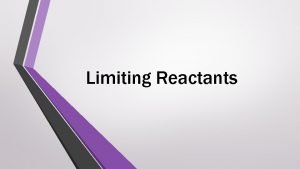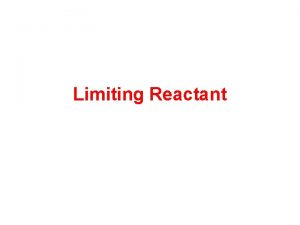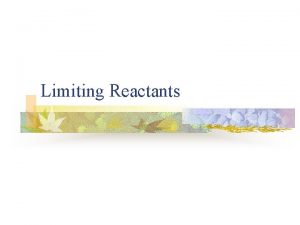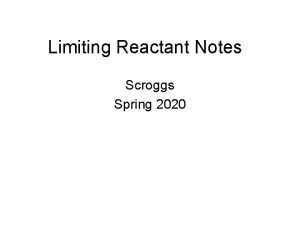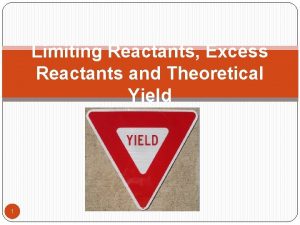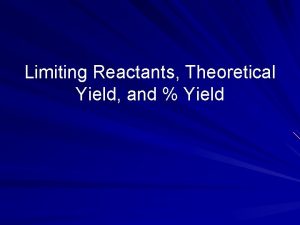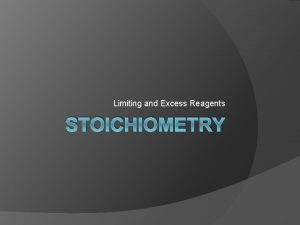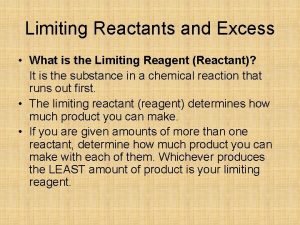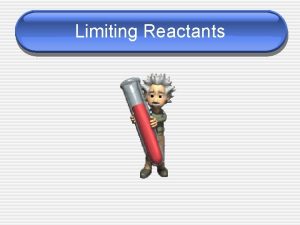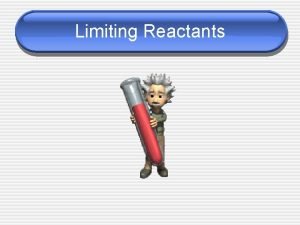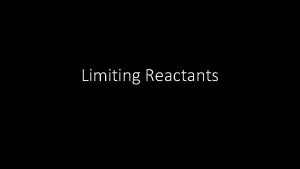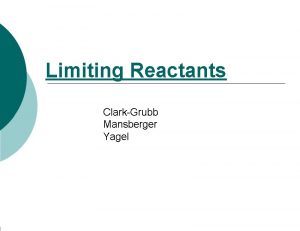Limiting and Excess Reactants 1 MassMass conversions 2










- Slides: 10

Limiting and Excess Reactants 1. Mass-Mass conversions 2. Identifying limiting reactant 3. Calculation of % Yield April 27, 2015

Objectives • Identify the limiting reactants in a chemical equation • Identify excess reactant and calculate the amount remaining after the reaction is complete. • Calculate the mass of a product when the amounts of more than one reactant are given 12/25/2021 Anura Hewagama 2

Review – Types of stoichiometric conversions N 2 (g) + 3 H 2(g) 2 NH 3 (g) 1 mole 3 mol 2 mol NH 3 Identify the type of conversion Mole →Mole Mass → Mass Q 1. How many moles of hydrogen gas are required to react with 5 moles of nitrogen gas ? Q 2. How many grams of hydrogen gas are required to react with 5 grams of nitrogen gas ? 12/25/2021 Anura Hewagama 3

Mass to Mass Conversion N 2 (g) + 3 H 2(g) 2 NH 3 (g) 1 mole 3 mol 2 mol NH 3 How many grams of NH 3 (g) is produced if you have 3. 1 g of H 2(g) ? • Type of conversion ? • Mass of one compound to mass of another- Mass to Mass • In this question- we assume that we have enough N 2 (g) to complete the reaction with 3. 1 g H 2(g) g of H 2 12/25/2021 CF Mol H 2 → Mol NH 3 Anura Hewagama g of NH 3 4

N 2 (g) + 3 H 2(g) 1 mole 3 mol 2 NH 3 (g) 2 mol NH 3 • 3. 1 g of H 2 12/25/2021 Mol H 2 Anura Hewagama Mol NH 3 g Mol NH 3 5

N • 2 (g) + 3 H 2(g) 1 mole 3 mol 12/25/2021 2 NH 3 (g) 2 mol NH 3 Anura Hewagama 6

Limiting Reactants In previous calculations we make several assumptions. v Reaction occurs to 100% efficiency (assume everything goes perfect) and therefore expect the maximum product is formed. (Theoretical Yield) v We have enough of the second reactant v There are no side reactions or unexpected occurrences v. In practice it is not possible to obtain a 100% perfect reaction. 12/25/2021 Anura Hewagama 7

Identifying Limiting and Excess Reactant • Small Amount Method 12/25/2021 Anura Hewagama 8

Calculating the excess reactant amount • 12/25/2021 Anura Hewagama 9

Book Chapter Problems Review example problem 11. 5, p 382 Practice Problems 23, 24 – p 383 12/25/2021 Anura Hewagama 10
 Limiting reactant
Limiting reactant Limiting and excess reactants race car answers
Limiting and excess reactants race car answers Limiting and excess reactants formula
Limiting and excess reactants formula Limiting reagent and excess reagent
Limiting reagent and excess reagent Finding limiting reactant
Finding limiting reactant Reactants products and leftovers
Reactants products and leftovers Limiting ingredient
Limiting ingredient Limiting reactants practice worksheet
Limiting reactants practice worksheet Limiting reactant def
Limiting reactant def How to calculate excess reactant
How to calculate excess reactant Limiting reagent
Limiting reagent
